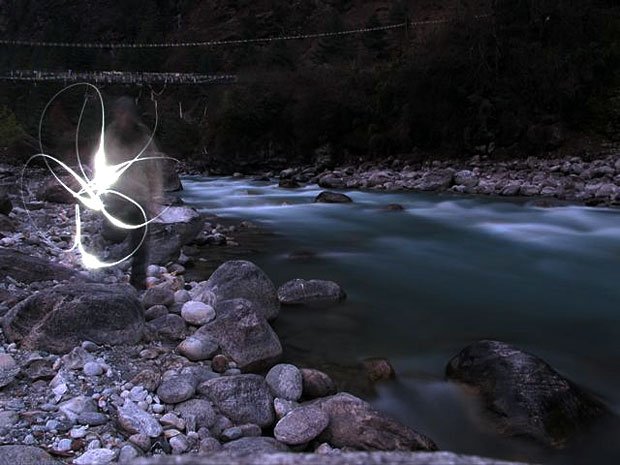Mt Everest Trek: Day fourteen

DAY FOURTEEN: We’re back at about 3500 m in Namche and all the trekkers comment on how much warmer it is. Last night I cooked in my sleeping bag; just a few days earlier, in Dingboche, I could barely muster enough clothing to stay warm.
Today we are, for the first time, largely retracing our steps. We leave about 8.30am under a warm sun and descend through the steep narrow streets of Namche, stopping to watch shopkeepers lay out their wares. There are noticeably more trekkers about than when we came through several days ago. The descent is dusty and crowded. There’s a stream of porters bringing up goods for the busy part of the trekking season and we’re also aware of the yak trains bearing Everest expedition goods and equipment. It’s warmer with every step. The trekkers seem to have a mixed reaction to heading home. Some are walking hard on the lead Sherpa’s heels, as if they can’t get down fast enough; others, me included, seem to be ambling more as time goes on. Actually, it’s probably been this way for most of the trek.
There’s a lot of space within a trekking party to walk as you please. You can stay in the main group or speed up or slow down and find solitude, or walk in a pair. There are five trekking Sherpas and they’re generally spread out among the party; the only certain thing is that one will be leading and one walking last. Our Sherpas all speak English — some better than others — and chatting to them about their lives and ambitions as you roll along the trail is an entrancing way to pass time. Most harbour ambitions to be elite, high-altitude Sherpas on mountaineering expeditions. They’re all under 30, and while being trekking Sherpas provides steady employment for several months of the year, they all have down time. Binod, for instance, lives in Kathmandu during the non-trekking season, and he doesn’t have work there. He’s done some courses — English language, first-aid — to improve his prospects, but the step up to high-altitude work will largely depend on the quality of his contacts. He’s got some form, at least, for high-altitude exertion: in 2008 he placed seventh in the Hillary-Tenzing Marathon, the world’s highest marathon, which runs from Everest Base Camp to Namche Bazaar.
It’s an easy walk along the valley to our last night’s campsite, at Phakding. We’re in camp by mid-afternoon, with time to relax and read and walk alongside the Dudh Koshi. Sometime before dinner a cricket game starts and almost everyone in camp joins in. The bat’s been carved from a slab of pine and the ball is a pair of manky socks mercifully wrapped up with masking tape. The game continues until just before dark.

